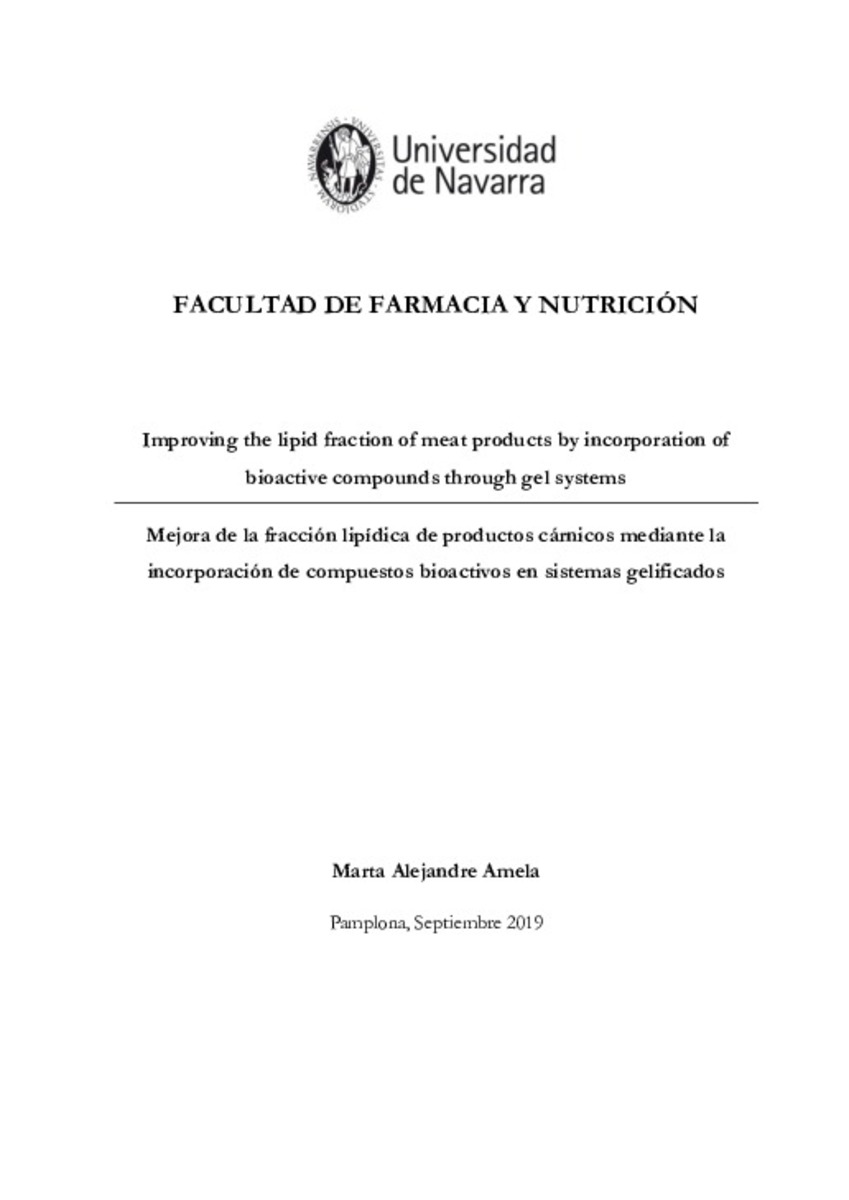Improving the lipid fraction of meat products by incorporation of bioactive compounds through gel systems
Palabras clave :
Tecnología de los alimentos
Valores nutritivos
Materias Investigacion::Ciencias de la Salud::Nutrición y dietética
Fecha de publicación :
7-nov-2019
Fecha de la defensa:
9-sep-2019
Cita:
ALEJANDRE AMELA, Marta. “Improving the lipid fraction of meat products by incorporation of bioactive compounds through gel systems”. Ansorena, D. y Astiasarán, I. (dirs.). Tesis doctoral. Universidad de Navarra, Pamplona, 2019.
Aparece en las colecciones:
Estadísticas e impacto
0 citas en

0 citas en

Los ítems de Dadun están protegidos por copyright, con todos los derechos reservados, a menos que se indique lo contrario.











